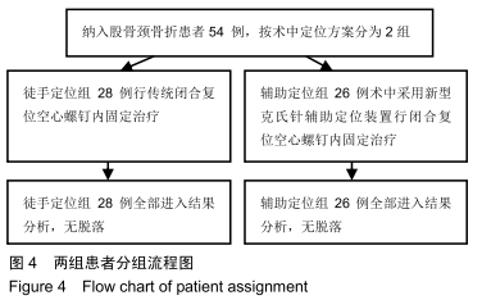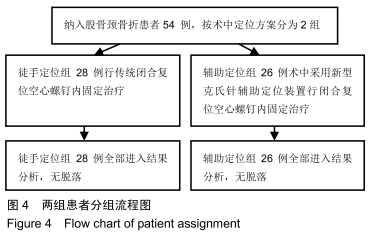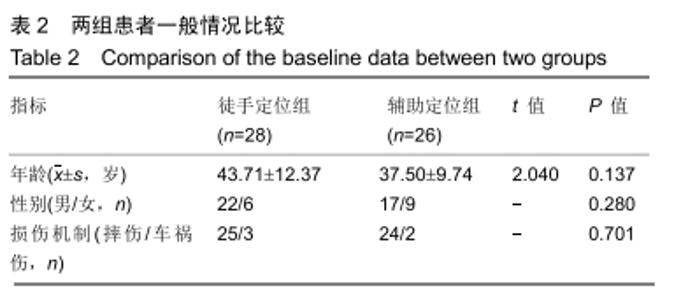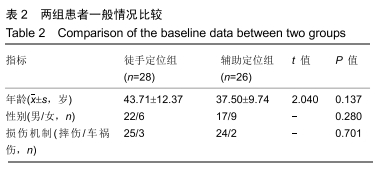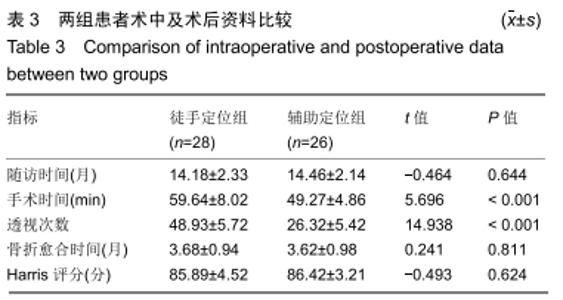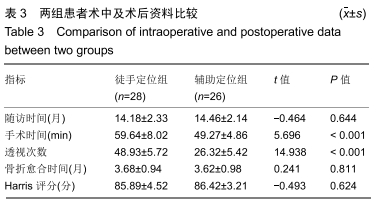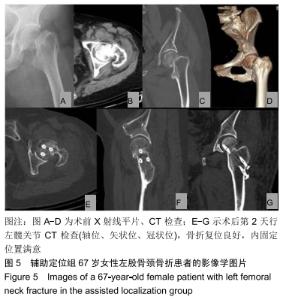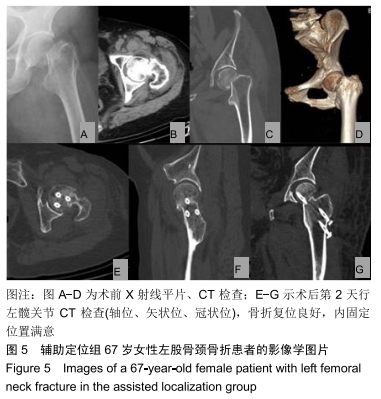[1] VARSHNEY MK, KUMAR A, KHAN SA, et al. Functional and radiological outcome after delayed fixation of femoral neck fractures in ediatric patients.J Orthop Traumatol. 2009;10(4): 211-216.
[2] BHANDARI M, DEVEREAUX PJ, TORNETTA P, et al. Operative management of displaced femoral neck fractures in elderly patients. An international survey. J Bone Joint Surg Am. 2005;87(9):2122-2130.
[3] 中国老年医学学会骨与关节分会创伤骨科学术工作委员会.老年髋部骨折诊疗专家共识(2017)[J].中华创伤骨科杂志, 2017, 19(11): 921-927.
[4] ROGMARK C, LEONARDSSON O. Hip arthroplasty for the treatment of displaced fractures of the femoral neck in elderly patients. Bone Joint J. 2016;98-B(3):291-297.
[5] 付鑫,韩哲,马信龙,等.移位型股骨颈骨折空间移位三维重建及其临床意义[J].中华创伤杂志,2015,31(1):37-41.
[6] WANI IH, SHARMA S, LATOO I, et al. Primary total hip arthroplasty versus internal fixation in displaced fracture of femoral neck in sexa- and septuagenarians. J Orthop Traumatol. 2014;15(3) :209-214.
[7] ZHANG H, HU YQ, ZHANG ZL.Age trends for hip geometry in Chinese men and women and the association with femoral neck fracture. Osteoporos Int. 2011;22(9):2513-2522.
[8] LY TV, SWIONTKOWSKI MF.Treatment of femoral neck fractures in young adults.J Bone Joint Surg Am.2008;90(10): 2254-2266.
[9] NISSON LT, JOHANSSON A, STROMQUIST B. Factors predicting heeling compications in femoral neck fractures 138 patients followed for 2 years. Acta Orthop Stand. 1993;64: 175-177.
[10] 曹振华,银和平,李树文.股骨颈骨折空心钉内固定数字化模板的建立[J].中国组织工程研究,2014,18(31):5017-5023.
[11] OAKEY JW, STOVER MD, SUMMERS HD, et al. Does screw configuration affect subtrochanteric fracture after femoral neck fixation? Clin Orthop Relat Res. 2006;443:302-306.
[12] 史威,范婕,张英泽,等. 两种构型空心加压螺钉固定头颈型股骨颈骨折的生物力学特征[J].中国组织工程研究与临床康复,2007, 11(25): 5039-5041.
[13] SADIC S, CUSTOVIC S, JASAREVUC M, et al. Proximal femoral nail antirotation in treatment of intertrochanteric hip fractures: a retrospective study in 113 patients. Med Arch. 2015;69(6): 352-356.
[14] VITALKAR S, MANGLUNIA AS, KULKARNI A, et al. Compression type stress fracture of femoral neck with equivocal X-ray features diagnosed on (99m) Tc-MDP SPECT/CT in a case of trivial hip pain. Indian J Nucl Med. 2016;31(3): 225-228.
[15] BERRINGTON DE GONZÁLEZ A, DARBY S. Risk of cancer from diagnostic X-rays: Estimates for the UK and 14 other countries. Lancet. 2004;363(9406):345-351.
[16] 刘明忱,银河,洪福训,等.应用多针和空心钉导针体外定位导向器内固定治疗股骨颈骨折[J].骨与关节损伤杂志, 2003,18(11): 724-726.
[17] 俞超,孙月华,李华,等. 计算机导航下空心钉内固定治疗股骨颈骨折[J]. 中华创伤骨科杂志,2004,6(10):1089-1091.
[18] HWANG TJ, KIANG C, PAUL M. Surgical applications of 3- dimensional printing and precision medicine. JAMA Otolarygngol Head Neck Surg. 2015;141(4):305-306.
[19] 黄波,荣绍远,李建华,等.双平面机器人导航辅助下空心钉内固定治疗股骨颈骨折[J].中华骨科杂志,2017,37(9):528-534..
[20] SELVAN VT, OAKLEY MJ, RANGAN A, et al. Optimum configuration of cannulated hip screws for the fixation of intracapsular hip fractures: a biomechanical study. Injury. 2004; 35(2):136-141.
[21] MÜLLER MC, BELEI P, DE LA FUENTE M, et al. Evaluation of a fluoroscopy-based navigation system enabling a virtual radiation-free preview of X-ray images for placement of cannulated hip screws. A cadaver study. Comput Aided Surg. 2011;16(1):22-31.
|
